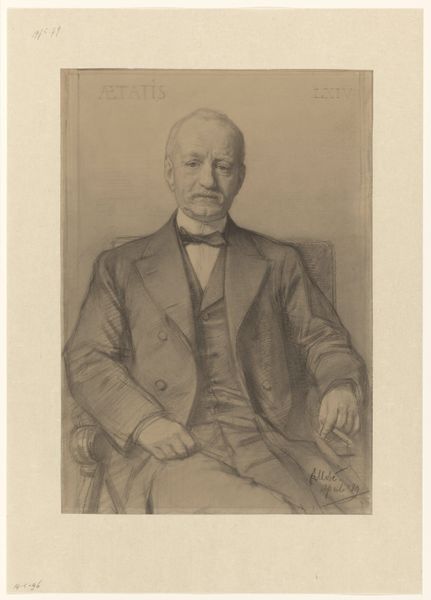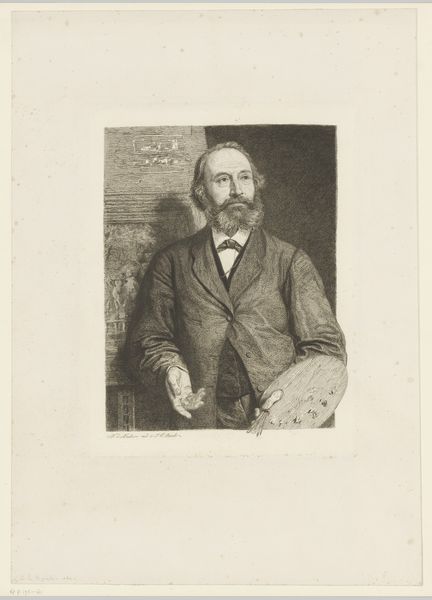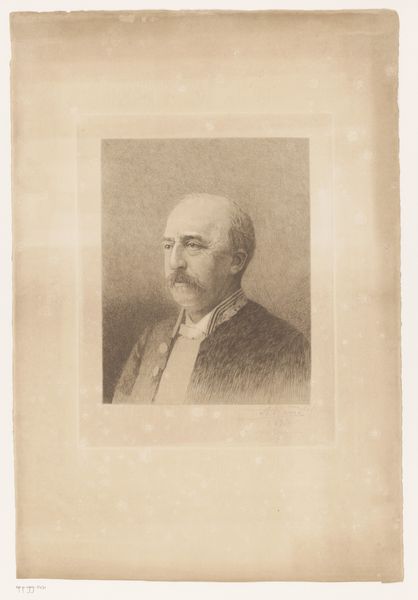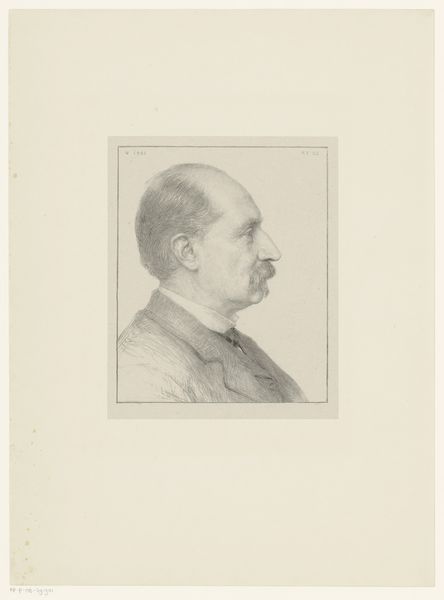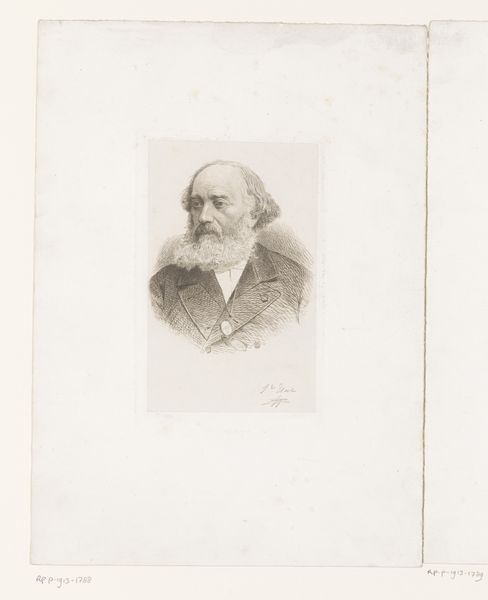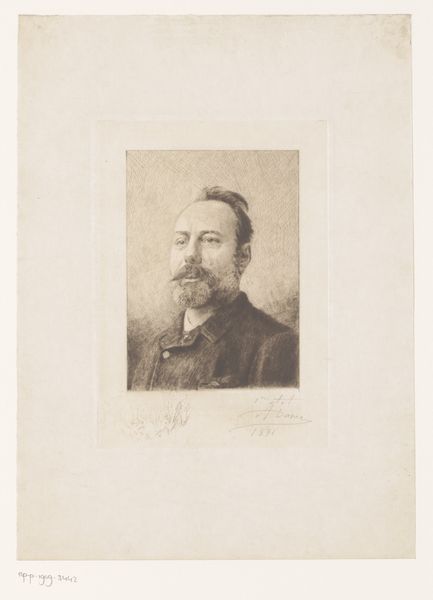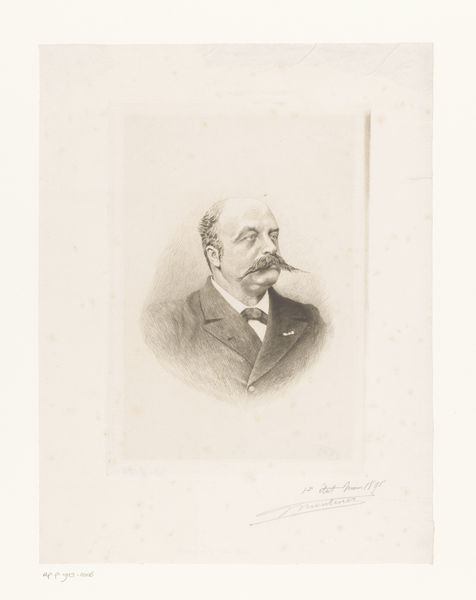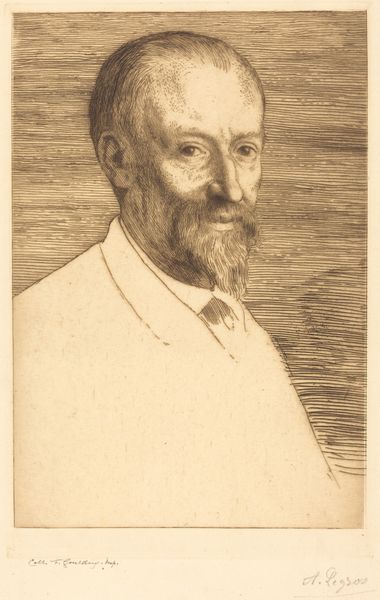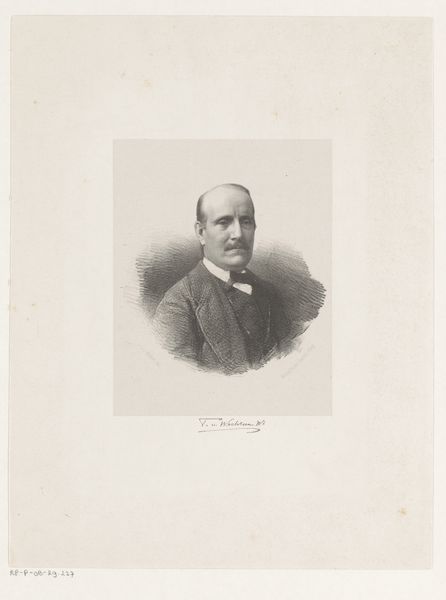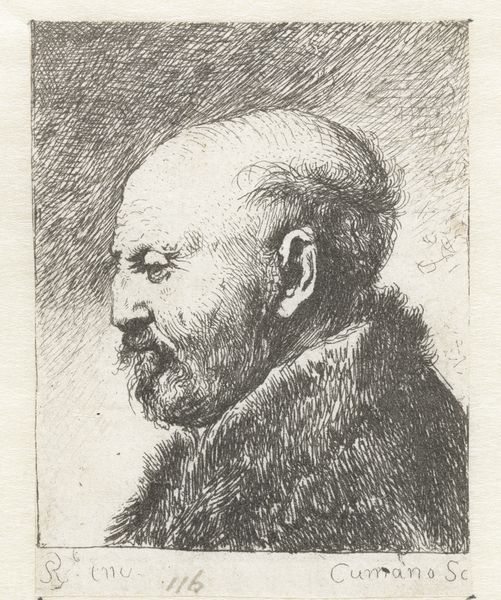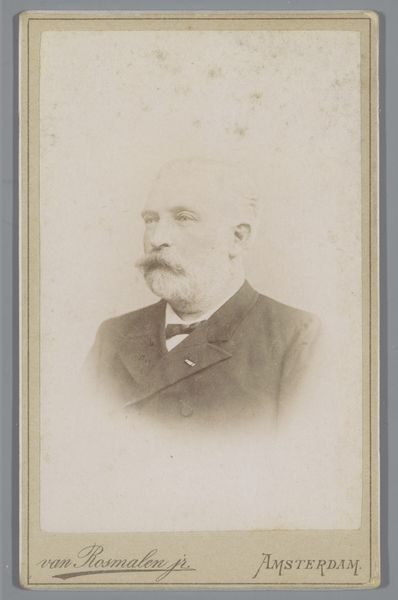
drawing, print, etching, paper
#
portrait
#
drawing
# print
#
etching
#
figuration
#
paper
Dimensions: 199 × 149 mm (image/plate); 405 × 283 mm (sheet)
Copyright: Public Domain
Editor: This is Anders Zorn’s etching, “Sir Ernest Cassel,” from 1909. The figure is formal, but the loose lines of the etching give it a sense of immediacy. What’s your take on this piece? Curator: Well, immediately, I consider Cassel’s position within the economic structures of the early 20th century. This wasn't just a portrait; it's a depiction of power and privilege at a turning point. Zorn, celebrated for his society portraits, offers us a glimpse into the networks of wealth and influence of the time. Think about what it meant to commission and display a portrait like this when imperialism, colonialism and wealth inequality were at their peaks. Who was this work for, and what was it meant to communicate? Editor: It feels like more than just a record of his appearance. Is Zorn making a statement? Curator: Absolutely, artists of this era don’t work in a vacuum. Zorn positions Cassel strategically. Notice how the details are rendered: The sharp lines defining the face and clothing emphasize Cassel's wealth and status, contrasting against the soft background. In what ways might this portrayal solidify Cassel’s role and power in society? Editor: So, it's about more than just the individual; it’s about the societal role he occupies. Curator: Precisely. This image becomes part of a larger dialogue about who gets seen, how they are seen, and who controls those representations. These artworks shape the very power structures they appear to only reflect. What’s one thing you will take away from understanding the work in this broader context? Editor: I hadn’t thought about the statement the work makes and not just how it looks; it’s more than a face, but an indicator of larger forces. Curator: Exactly. Analyzing art with these factors will reveal a richer understanding of our history and the world we inhabit today.
Comments
No comments
Be the first to comment and join the conversation on the ultimate creative platform.
